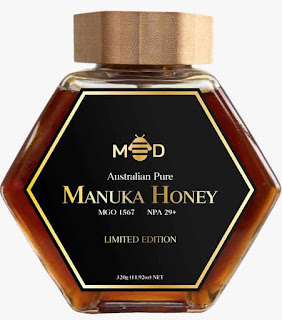How to select raw honey?
Selecting raw honey has to be as obvious as simply selecting out storage
tagged raw honey. Sadly, management about tagged is greatly careless, which refers
that you cannot believe tags alone. Buy manuka honey in Australia is well-known for its
health benefits and work as an immunity booster for many generations. The good path to
make sure that your honey is to be sure raw is to shop straightly from locally developed
origins. Once you discover a source you can believe, choosing the right honey
for you is for the most part a matter of examining flavors and powers until you
discover that one (or certain) that is just correct. Although, raw honey does convey
some threats, which refers to it should not be consumed by everybody.
Method 1
Discovering raw honey
1.
Know what raw honey truly refers
to. Know that really
raw honey has not been prepared, filtered, or inherently heated in any way.
This protects its natural antioxidants, minerals, and enzymes, which can offer
health advantages. However, be conscious that
laws and instructions about tagging are very loose. Do not suppose that honey
is 100% raw just because the tagging explains it as raw, pure, or natural. Preparing, filtering, and heating
honey does uncover away most of its nutrients. Although, if you are not capable
to discover exactly raw honey, treated honey is still beneficial than sugar and
many other sweeteners.
2.
Discover local sources. If probable, study and/or visit local bee farms. If the
farms themselves are too away out of reach, visit sellers near to home (like
the farmer's markets or natural food stores) who inventory their product and
deal with them straightly. Either path, buy your honey straightly (or as straightly
as you can) from a close source, whose executions and trace-of-sale are more simply
confirmed than a worldwide company’s. Make sure that your honey is in actual
fact 100% raw by speaking straightly with the manufacturers or as few intermediaries
as probable. Once
more, be cautious of tagging when glancing at honey in your grocery store. Because
of calm rules, honey that was imported from distant can still be tagged as
local honey provided that it was repackaged nearby.
3.
Mark the difference. Since you cannot all the time believe in labeling, grow
an eye to recognize raw honey from treated honey. Anticipate honey that has
been refined, filtered, and heated to show clean, with slight or no crystals or
other clear particles laying off in the liquid. In comparison, anticipate raw
honey to take shape more willingly than treated honey, outcoming in a less fine
liquid. However:
This
is less of regulation and more of an instruction. Any type of honey may harden
or liquify over time, relying on its disclosure to heat. Raw honey may show by the
opportunity to be fine liquid with slight or no adulteration. Buy the best
MGO manuka honey is popular for its antibacterial properties. Treated honey is usually
heated before wrapping for creative causes, so as to allure customers who may
be held over by hardening honey’s absence of consistency. Treated honey is also
cleaned to eliminate components (like pollen) that customers may consider as adulterations.
In consequence, honey that has hardened and/or show to include specks is more probably
to be raw.
Method 2
Shopping the flavor
1.
Taste for strength. Anticipate the flavor of honey to differ in strength.
For strong flavors, favor honey that show dark in color. For honey that won’t overwhelm
other components, select a lighter color. The flavor is, evidently, a case of
taste. Therefore, think about utilizing darker, stronger jars of honey to liven
up kinds of bland foods, such as white toast or primary tea. Vice versa, utilize
lighter jars of honey when you only wish to sweeten something without considerably
modifying how it tastes.
2.
Sample distinctive floral diversities. Since bees cater for on nectar created by a diversity
of flowers, look for the flavor of honey to differ relying on which flower they
fed on. Examine the wrapping’s label or query the bee farm or distributor to discover
which kind(s) of flowers were utilized for each product. If probable, query for
a taste test or purchase slight samples to discover which types cheer you the
most.
Honey arrives in both miofloral and multi-floral diversities. Miofloral refers
to that only 1 kind of flower was utilized. Multiflora or floral combine signifies
that various were utilized.
3.
Buy food-grade honey. Be cautious that,
in extra to eating, honey is also advertised for healing utilizations. Understand
which diversities are mainly advertised as food and which are praised for unusual
healing characteristics, like Manuka. Even though
there is slight cause to not eat healing-grade honey just for the chaos of it, look
for these diversities to probably cost more.


Comments
Post a Comment